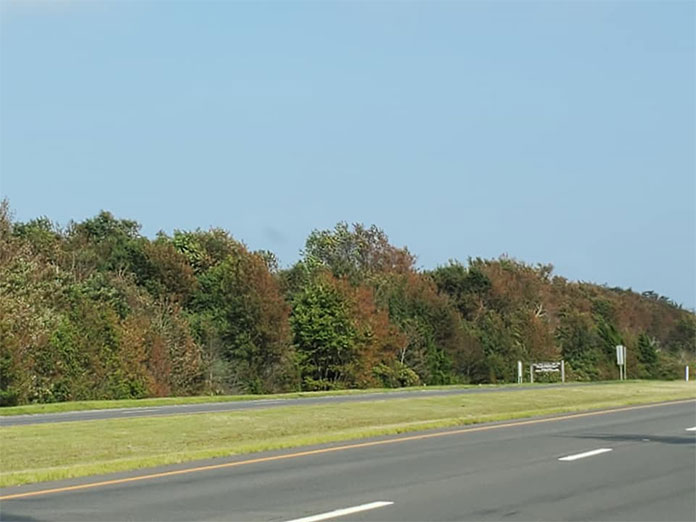
STAFFORD – Agricultural experts are telling shore residents that the trees which are looking dead after Tropical Storm Isaias will likely recuperate given time.
“What has happened to the trees in the neighborhood? Why are they brown on one side or burnt looking?”
These are the questions that the Rutgers Cooperative Extension of Ocean County have been fielding from residents. The sight of the trees looking sickly or dead is causing them great stress.
The trees are stressed, too, but not dead, according to a report from the agriculturists. They just need time to recuperate.
The storm brought a great deal of wind and salt to shore communities. Calls have come in from such areas as Bayville, Seaside, Gilford Park, Island Beach State Park, and LBI, said Deborah Fuentes of the Rutgers Cooperative Extension. Open areas and parking lots have trees showing windburn, too. A similar situation is probably happening up and down the coast.

“There is an area in Manahawkin on Rte. 72 West between Mill Creek Road and Marsha Drive across from Beach Haven West, a lagoon community,” she said. “Almost all the broadleafed trees are showing what wind and salt can do to trees when they are full of foliage!”
Tropical Storm Isaias blew in with fierce wind and rain and caused quite a mess for area Department of Public Works employees and utility company workers. Downed trees, a Sprint cell tower that was toppled, property damage, tornado warnings and numerous power outages were part of what Isaias left behind.
Statewide, close to 1 million electrical company customers had no power the next day. It would be days before some of them had their electricity restored.
“Many clients are in disbelief that a tropical storm could do this much damage,” Fuentes said. “Superstorm Sandy would have had as much tree canopy damage, too, if it had happened in August instead of the end of October. The trees are stressed but not dead. No need to spray, treat, or fertilize the trees. There is no ‘cure,’ only time. The trees will rebound, as have we.”






